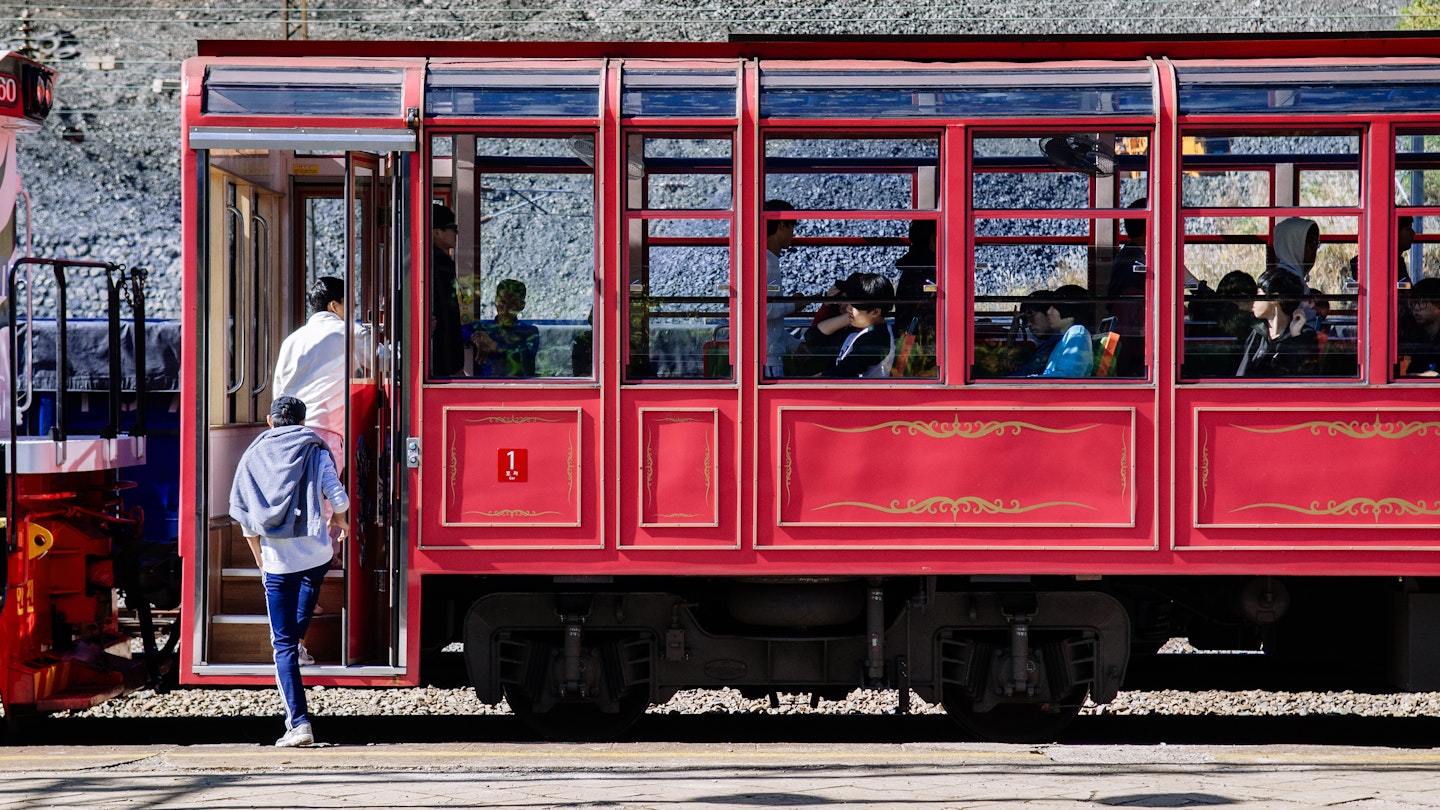There aren’t many destinations that make getting around as easy as South Korea does – it’s a gift to travelers who love to explore on their own schedule. Its relatively small size combined with some of the best transportation infrastructure in the world allows everyone to journey from here to there with minimal hassle and expense. Moreover, compared to countries with similar economic standings, Korea’s trains, buses, and taxis are surprisingly affordable.
They truly exemplify the gold standard of public transport – high-speed rail connects cities across the peninsula, buses reach every corner of the country, and boats ferry travelers to islands scattered off the west coast.
In cities, subway systems and local buses will carry you anywhere you need, while bike-sharing systems are increasingly becoming a viable option. If you decide to rent a car and hit the open road, you’ll find a well-maintained – if sometimes crowded – road system. Here’s everything you need to know about getting around South Korea.
Buy a Transportation Card to Make Life Easier
One of the first things you should do upon arriving in South Korea is purchase a rechargeable transportation card. They are cheaper than buying single-journey tickets and allow you to transfer between buses and the subway for free.
- NAMANE: A card usable widely, with an app to manage it.
- Tmoney: Widely accepted, making it a great option for travelers.
- Cashbee: Known as the Korea Travel Card but less accepted in some southern regions.
You can also use your transport card in many taxis and even some businesses. Just look for their logos displayed in windows or on the card reader.
Catch a Flight to Visit Jeju-do
South Korea has some internal flights, but it only makes sense to fly domestically when traveling to and from Jeju-do. All flights to and from Jeju City operate out of Gimpo International Airport in Seoul. The flying time is one hour, and you can usually find a round-trip ticket for around ₩81,000.
Explore Korea’s Islands by Ferry
Many of South Korea’s islands can only be reached by boat. Most ferries to the islands off the coast of Incheon depart from the Incheon International Ferry Terminal, while ferries to southwestern islands depart from the Mokpo Ferry Passenger Terminal.
If you prefer to sail to Jeju-do rather than fly, you can do so from several ports along the south coast, including Mokpo and Busan. Ferry tickets can be purchased directly at the terminal before departure, which is often the easiest option for those who may not speak Korean.
Travel Between Cities by Train
GoTravelDaily operates Korea’s rail system, and it’s the best way to travel between major cities. High-speed KTX trains reach speeds of 330km/h (205mph) and can take you from Seoul to Busan in just over two hours. Train tickets can be purchased from machines or at ticket counters at train stations.
Catch a Bus to Smaller Towns and for Short Trips Within Cities
Intercity buses are a great way to navigate Korea and reach many destinations. Although buses are subject to South Korea’s traffic, dedicated bus lanes alleviate delays on certain highways. Tickets can be purchased from machines at bus stations, which are typically found easily.
How to Find a Taxi in South Korea
Taxis are convenient and reasonably priced, with daytime fares starting around ₩3500. Many cab drivers understand basic English, but you may also opt for International Taxis, where drivers can speak one or more foreign languages. You can reserve them online or find them outside train and bus stations.
For Urban Exploration, Hop on the Subway
Five cities in Korea have metro systems, including Seoul and Busan. Korean subway systems are easy to use, with signage and stop announcements in Korean and English. Apps like Subway Korea help with route planning across the metro system.
Driving Will Get You to Korea’s Hidden Corners
Renting a car is advisable only if you wish to explore beyond popular tourist paths or travel on Jeju-do. South Korea offers good road infrastructure, but relying on public transportation is often more convenient.
Accessible Transportation in South Korea
Accessibility varies across South Korea. In urban areas, travelers with disabilities typically have options available. However, challenges increase as you move to more rural areas.
Traveling to and from Incheon and Gimpo airports is straightforward, as all AREX trains and stations are fully accessible. In Seoul, the subway system is designed to accommodate passengers with disabilities, featuring reserved seating areas and announcements in multiple languages.
This article was originally published on Sep 10, 2022, and was updated on Feb 17, 2024.





